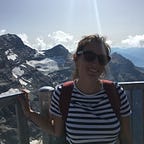“The soil needs its own dictionary.”
This book is truly wonderful and mesmerising. You would need to read it for yourself!
This was our second Climate Justice Bookclub reading. It’s a gorgeous geological memoir combining nostalgic, heartwarming and otherworldly poetry with nature writing in search for belonging. It resonated with me on many levels. I’ve attempted capturing some of my reflections.
What does it mean to belong?
Propelled by her father’s ill health and his passion for history within the small Devon village, Elizabeth Jane-Burnett reimagines ideas of belonging and community through layers of geology, history, language and memory. There’s a fascinating playfulness in the search of what it means to belong and connect. The story is a powerful and vivid illustration of how land and soil shapes us. It gave me a new language and joy for my own search of belonging.
“What fills my lungs is wider than breath could be. It is a place and a language torn, matted and melded; flowered and chiming with bones. That breath is that place and until I get there I will not really be breathing.”
It’s intriguing to follow the author, an isolated figure within the beautiful landscape, who finds home within the soil but struggles to find this same home with the people there. She writes ‘the land accepts me without question…’ This reminded me of The Home Place by J. Drew Lanham who writes ‘But in all my time wandering I’ve yet to have a wild creature question my identity.’
During a year of being primarily at home, this book gave me an escape, a way to travel and experience more. But also to question: what does it mean to truly connect with a person and with a place? How do we do this beyond words? How can we look and explore the other magnificent layers of what makes a person or a space in order to connect?
“In the country: plants, birds, estate agents. As I cover the distance between us, I ask: how do you travel to another person? Physical presence gets you somewhere, but once together, verbal language can fall so short.”
The book’s working title was ‘A dictionary of soil’ — a theme which runs throughout. On what soil have you grown up? How have you played with it in your home place? The soil here is presented through a geographical history; and through the writing we can smell and taste it. It maps history through soil and geo patterns, whilst widening the perspective of memoir writing. It’s a sensory book illustrating community and belonging as caring, connecting, stretching back. Connected yet fragile.
“Now, in Birmingham, although there’s a garden, as a rented property I don’t have free rein over it. I wonder what the figures are on this; people disconnected from soil because of lives too transient to grow attached to it.”
Nature writing capturing what’s there beyond words
Unlike classic white man nature writers, Burnett brings the nature to life — being fully immersed in nature rather than being a passive observer. She uses all the senses and paints a picture of the environment that as readers we can experience for ourselves — taste, smell, imagine and admire. There are a lot of layers. Networks rather than a single thread. Lots of knots to explore.
The writing provides a lot of spaciousness. Like the Japanese concept of yutori that I was reminded about by Naomi Shihab Nye on this podcast. Being allowed to live with spaciousness through the writing. The feeling after you read a poem and knowing you can hold it and it can hold you in its place. Elizabeth Jane-Burnett holds you in the space with her —whether that’s through transforming bird song to writing and poems to transport you closer to nature or making lists of things she sees whilst travelling to take you on the journey with her.
“Pulling my fingers through, my mouth fills with grass, my toes dig in to propel me. I feel my internal circuitry change: I am a plant as well as animal. My blood transports oxygen; my chlorophyll produces it. Oxygen, carbon, hydrogen, nitrogen, phosphorus surge along tissue, torso, culm, to my blades. Blood blends magnesium as well as iron. I am grass made flesh. Grassling.”
End notes
Climate Justice bookclub is inspired by by Jessica J. Lee’s (#AlliesInTheLandscape) — a reading club to help reflect how race shapes our outdoors experiences.
The Grassling’s reflective questions, written and shared by Jessica J. Lee:
- “Each layer of settlement giving way for another, ideas of who and what is native ebbing and flowing with the years” (Ch. 6). How does THE GRASSLING reimagine ideas of community and belonging?
- “While others see him as belonging…they do not see that in me. So while I am pulled towards that place by all that is deeply knotted in me, I am pulled back by those there now” (Ch 11). How does Burnett play with the figure of the rural nature writer?
- “If a map is used to prevent you from getting lost, then what do you need when you come to get lost?” (Ch 36). When it comes to fostering connections with nature and place, which local PoC-led initiatives can I offer material support to?
Previous reading: Black Faces, White Spaces: Reimagining the Relationship of African Americans to the Great Outdoors by Carolyn Finney
Current reading: The Home Place by J. Drew Lanham
Thanks to Emily Bazalgette for starting a Writing Club that helped me take the time to write and publish this.
For any likes, retweets and engagement on Climate Justice bookclub posts, I’ll be donating to: Black Girls Hike providing safe space for Black women to enjoy outdoors and Wild in the City who are working to increase black leadership in nature.
